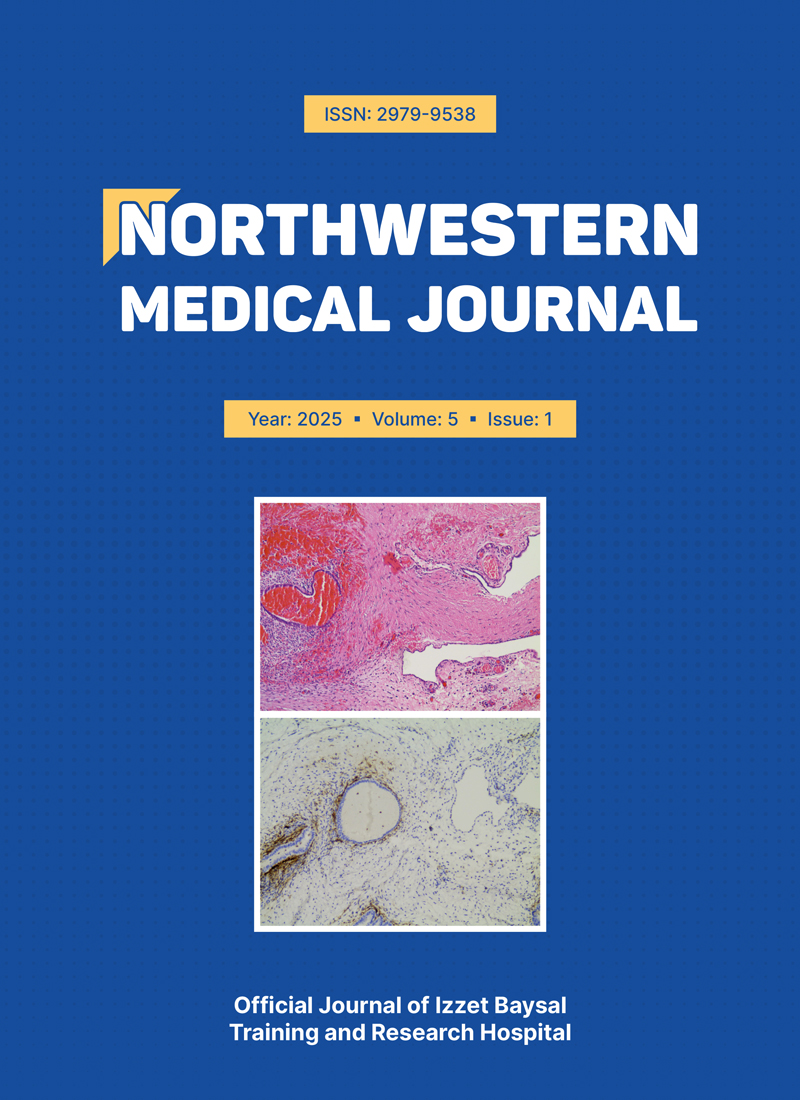Abstract
Aim: The aim of this study was to assess the physical activity level of university students during exam week and to investigate the relationship between physical activity level and the severity of fatigue, sleep quality, and anxiety.
Methods: Volunteers aged 18-30 years, studying in health sciences, were included in the study. Physical activity was assessed using the International Physical Activity Questionnaire (IPAQ) short form, fatigue was assessed using a visual analog scale, sleep quality was assessed using the Pittsburgh Sleep Quality Index (PSQI), and anxiety was assessed using the State and Trait Anxiety Inventory (STAI).
Results: The mean age and body mass index of the 92 students included in the study were 21.1±2.0 years and 22.0±3.5 kg/m2, respectively. Among the students, 38% were inactive, 56.6% were minimally active, and 5.4% were in the highly active physical activity category. There was a moderate negative correlation between IPAQ scores and fatigue (-0.449, p<0.001). Additionally, there was a moderate negative correlation between IPAQ scores and PSQI scores (-0.426, p=0.002), a moderate negative correlation between IPAQ scores and STAI-State (-0.435, p=0.001), and a weak negative correlation between IPAQ scores and STAI-Trait scores (-0.362, p=0.003).
Conclusion: Physical activity levels were found to be lower among university students during exam week compared to those reported in the literature. Additionally, as physical activity levels increased, fatigue and anxiety levels decreased and sleep quality improved. Encouraging university students to maintain adequate physical activity during exam week may be beneficial for improving fatigue, sleep quality, and anxiety.
Keywords: anxiety, exam, fatigue, physical activity, sleep quality, university students
Copyright and license
Copyright © 2025 The Author(s). This is an open-access article published by Bolu İzzet Baysal Training and Research Hospital under the terms of the Creative Commons Attribution License (CC BY) which permits unrestricted use, distribution, and reproduction in any medium or format, provided the original work is properly cited.
How to cite
References
- Arslan SS, Alemdaroğlu İ, Öksüz Ç, Karaduman AA, Yilmaz ÖT. The effect of physical activity on academic success and depression in young individuals. Journal of Occupational Therapy and Rehabilitation. 2018; 6(1): 37-42. https://doi.org/10.30720/ered.417878
- Haase A, Steptoe A, Sallis JF, Wardle J. Leisure-time physical activity in university students from 23 countries: associations with health beliefs, risk awareness, and national economic development. Prev Med. 2004; 39(1): 182-90. https://doi.org/10.1016/j.ypmed.2004.01.028
- Alapin I, Fichten CS, Libman E, Creti L, Bailes S, Wright J. How is good and poor sleep in older adults and college students related to daytime sleepiness, fatigue, and ability to concentrate? J Psychosom Res. 2000; 49(5): 381-90. https://doi.org/10.1016/s0022-3999(00)00194-x
- Erözkan A. University student’s test anxiety and coping behaviours. Muğla Üniversitesi Sosyal Bilimler Enstitüsü Dergisi. 2004; 12: 13-38.
- de Vries JD, van Hooff ML, Geurts SA, Kompier MA. Exercise as an intervention to reduce study-related fatigue among university students: a two-arm parallel randomized controlled trial. PLoS One. 2016; 11(3): e0152137. https://doi.org/10.1371/journal.pone.0152137
- Gerber M, Brand S, Elliot C, Holsboer-Trachsler E, Pühse U, Beck J. Aerobic exercise training and burnout: a pilot study with male participants suffering from burnout. BMC Res Notes. 2013; 6: 78. https://doi.org/10.1186/1756-0500-6-78
- Jonsdottir IH, Rödjer L, Hadzibajramovic E, Börjesson M, Ahlborg G. A prospective study of leisure-time physical activity and mental health in Swedish health care workers and social insurance officers. Prev Med. 2010; 51(5): 373-7. https://doi.org/10.1016/j.ypmed.2010.07.019
- Craig CL, Marshall AL, Sjöström M, et al. International physical activity questionnaire: 12-country reliability and validity. Med Sci Sports Exerc. 2003; 35(8): 1381-95. https://doi.org/10.1249/01.MSS.0000078924.61453.FB
- Saglam M, Arikan H, Savci S, et al. International physical activity questionnaire: reliability and validity of the Turkish version. Percept Mot Skills. 2010; 111(1): 278-84. https://doi.org/10.2466/06.08.PMS.111.4.278-284
- Ağargün MY. Pittsburgh uyku kalitesi indeksinin geçerliği ve güvenirliği. Turk Psikiyatri Derg. 1996; 7: 107-15.
- Öner N, Le Compte A. Süreksiz durumluk / sürekli kaygı envanteri el kitabı. İstanbul: Boğaziçi Üniversitesi Yayınları; 1985.
- Saygılı S, Akıncı AÇ, Arıkan H, Dereli E. Sleeping quality and fatigue among university students. Ejovoc (Electronic Journal of Vocational Colleges). 2011; 1(1): 88-94.
- Savcı S, Öztürk M, Arıkan H, İnal İnce D, Tokgözoğlu L. Physical activity levels of university students. Arch Turk Soc Cardiol. 2006; 34(3): 166-72.
- Fagaras SP, Radu LE, Vanvu G. The level of physical activity of university students. Procedia Soc Behav Sci. 2015;197:1454-7. https://doi.org/10.1016/j.sbspro.2015.07.094
- Taylor DJ, Bramoweth AD. Patterns and consequences of inadequate sleep in college students: substance use and motor vehicle accidents. J Adolesc Health. 2010; 46(6): 610-2. https://doi.org/10.1016/j.jadohealth.2009.12.010
- Kang JH, Chen SC. Effects of an irregular bedtime schedule on sleep quality, daytime sleepiness, and fatigue among university students in Taiwan. BMC Public Health. 2009; 9: 248. https://doi.org/10.1186/1471-2458-9-248
- Celikel FC, Celikel S, Erkorkmaz U. Smoking determinants in Turkish university students. Int J Environ Res Public Health. 2009; 6(8): 2248-57. https://doi.org/10.3390/ijerph6082248
- Öncel SY, Gebizlioğlu ÖL, Alioğlu FA. Risk factors for smoking behavior among university students. Turkish Journal of Medical Sciences. 2011; 41(6): 1071-80. https://doi.org/10.3906/sag-1009-1122
- Özgür İlhan İ, Yıldırım F, Demirbaş H, Doğan YB. Alcohol use prevalence and sociodemographic correlates of alcohol use in a university student sample in Turkey. Soc Psychiatry Psychiatr Epidemiol. 2008; 43(7): 575-83. https://doi.org/10.1007/s00127-008-0335-z
- Fernández-Mendoza J, Vela-Bueno A, Vgontzas AN, et al. Nighttime sleep and daytime functioning correlates of the insomnia complaint in young adults. J Adolesc. 2009; 32(5): 1059-74. https://doi.org/10.1016/j.adolescence.2009.03.005
- Sherrill DL, Kotchou K, Quan SF. Association of physical activity and human sleep disorders. Arch Intern Med. 1998; 158(17): 1894-8. https://doi.org/10.1001/archinte.158.17.1894
- Aydın A, Tiryaki S. A study on the determination of the factors affecting the anxiety level of university students (KTU sample). Kastamonu University Journal of Forestry Faculty. 2017; 17(4): 715-22. https://doi.org/10.17475/kastorman.282559
- Yüceant M. Investigation of stress, anxiety, depression, and psychological well-being levels of individuals who regularly play tennis. Education Quarterly Reviews. 2022; 5(2): 270-81. https://doi.org/10.31014/aior.1993.05.02.488
- McDowell CP, Dishman RK, Gordon BR, Herring MP. Physical activity and anxiety: a systematic review and meta-analysis of prospective cohort studies. Am J Prev Med. 2019; 57(4): 545-56. https://doi.org/10.1016/j.amepre.2019.05.012











